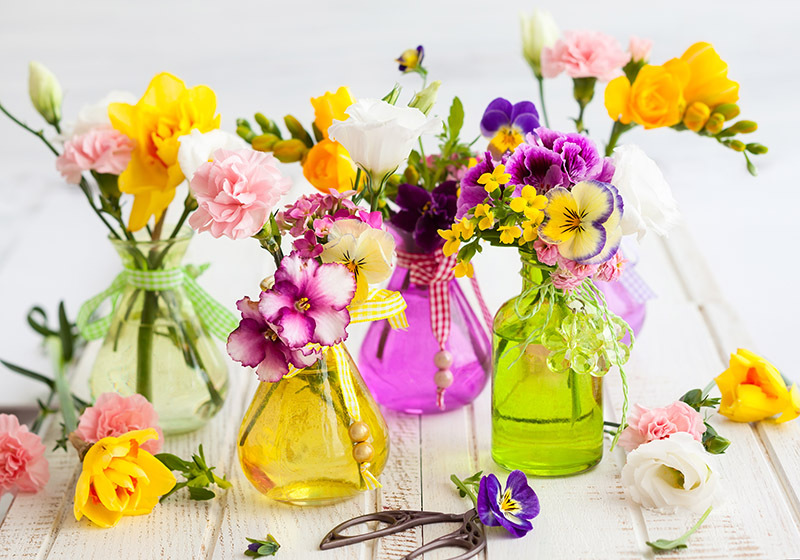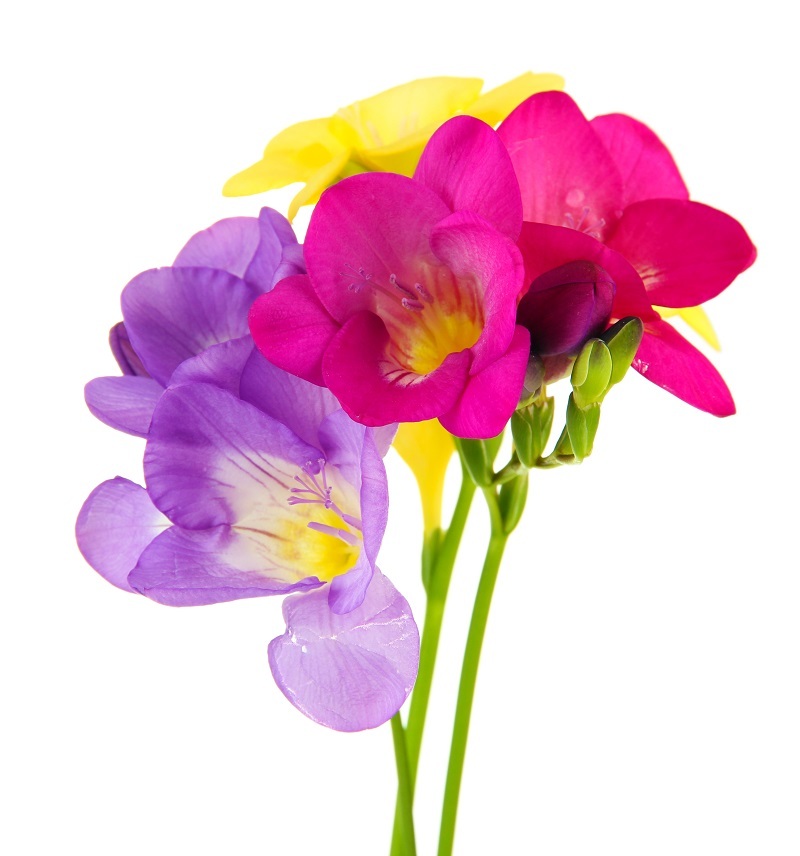Cultivating Orchid Excellence: Your Guide
Posted on 04/09/2025
Introduction to Cultivating Orchid Excellence
Orchids are among the most captivating and diverse plant families in the world, displaying stunning blooms and adding unparalleled elegance to any indoor or outdoor garden. Achieving orchid excellence isn't merely about growing these exotic flowers--it's about understanding their unique requirements, nurturing them with dedicated care, and creating the ideal environment for them to thrive. This comprehensive guide will walk you through the essential practices, tips, and secrets needed to cultivate exquisite orchids, ensuring they flourish for years to come.

The Fascinating World of Orchids
Orchids belong to the Orchidaceae family, which encompasses more than 25,000 species and over 100,000 hybrids. Native to diverse climates and ecosystems around the globe, orchids exhibit an intriguing range of shapes, sizes, and colors. Their reputation for delicate beauty and challenging care has both fascinated and intimidated countless gardeners. However, with the right knowledge and approach, anyone can become an orchid enthusiast--and excel at cultivating orchid excellence.
The Benefits of Growing Orchids
- Aesthetic Appeal: Orchids boast intricate blooms and unique structures, making them stunning ornamental plants for homes and offices.
- Longevity: With proper care, some orchid varieties can bloom for months and live for decades.
- Air Quality: Like many houseplants, orchids can help purify indoor air by absorbing carbon dioxide and releasing oxygen.
- Personal Satisfaction: Successfully nurturing orchids gives gardeners a unique sense of accomplishment and joy.
Understanding Orchid Types
To master the art of cultivating orchids, it's vital to familiarize yourself with their various types and characteristics. While thousands of species exist, some are especially popular and recommended for both beginners and seasoned growers seeking orchid excellence.
Popular Orchid Species and Their Characteristics
- Phalaenopsis (Moth Orchid): Among the easiest and most common orchids, known for their long-lasting blooms and resilience.
- Cattleya: Renowned for their large, fragrant, and vividly colored flowers, often called the "Queen of Orchids."
- Dendrobium: Robust and diverse, these orchids exhibit tall canes and beautiful flower clusters.
- Oncidium: Nicknamed "dancing lady" due to their fluttery petals; well-suited for advanced growers.
- Vanda: Famous for their dramatic color patterns and large, showy blossoms, thriving best in hanging baskets.
Essentials of Orchid Care: The Path to Excellence
Achieving orchid excellence requires careful attention to several key factors. Let's explore the vital aspects of orchid care and cultivation.
1. Light: Letting Your Orchids Shine
Orchids require adequate light to produce healthy blooms, but they are sensitive to excessive direct sunlight, which can scorch their leaves. Most household orchids excel in bright, indirect light. East-facing windows are ideal, while south or west windows should be filtered with sheer curtains. An easy indicator of proper light is leaf color:
- Bright green: Perfect light conditions.
- Dark green: Too little light; flowers may not bloom.
- Yellowish or reddish spots: Excessive or direct sunlight.
2. Temperature and Humidity: Mimicking Natural Habitats
Orchids are sensitive to their climate. Most types prefer:
- Daytime temperatures between 65?F-80?F (18?C-27?C).
- Nighttime temperatures around 55?F-65?F (13?C-18?C).
- Humidity levels between 40-70%. Consider a humidity tray, room humidifier, or regular misting during dry seasons.
Maintaining a slight drop between day and night temperatures often encourages blooming, a secret to cultivating award-winning orchids.
3. Watering Techniques: Avoiding Common Pitfalls
Over-watering is a frequent mistake that leads to root rot, one of the primary reasons behind orchid failure. Optimal watering frequency varies based on species, container, and environment. As a rule of thumb:
- Water thoroughly when the potting medium is nearly dry but not completely bone-dry.
- Use room-temperature, non-chlorinated water (rainwater or distilled water is best).
- Ensure that excess water drains freely from the container. Never let orchids sit in water.
Inspect roots regularly--healthy roots are firm and green to white. Wrinkled, mushy, or brown roots suggest overwatering or poor drainage.
4. Potting and Repotting for Orchid Success
Most orchids do not grow in soil. Instead, they prefer a special orchid potting mix--often a blend of bark, perlite, and sphagnum moss--which provides drainage and airflow to roots. Tips for potting and repotting:
- Repot every 1-2 years to refresh the media and check root health.
- Select well-ventilated containers with drainage holes.
- Gently remove old media and trim away any dead roots before repotting.
Repotting time is also great for inspecting your plant for pests and diseases.
5. Feeding: Providing Essential Orchid Nutrients
To achieve the pinnacle of orchid excellence, regular feeding is essential. Use a balanced, water-soluble fertilizer labeled for orchids and follow the manufacturer's dilution guidelines. Many growers recommend "weakly, weekly": applying a diluted dose at every watering. Avoid over-fertilizing; more is not better and can damage sensitive orchid roots.
- Reduce feeding during winter or dormant periods.
- Rinse pots with clear water monthly to prevent salt buildup.
Advanced Orchid Cultivation Techniques
Once you master basic care, take your skills to the next level--and approach true orchid mastery--with these advanced tips:
Propagation: Expanding Your Collection
Propagating orchids can be highly rewarding. Common techniques include:
- Division: Mature plants are split into two or more segments, each with healthy roots and shoots.
- Keiki Growth: (Hawaiian for "baby") Some orchids (like Phalaenopsis) naturally produce offshoots on flower spikes, which can be separated and potted.
- Backbulbs: Older pseudobulbs from sympodial orchids (like Dendrobium) can sometimes sprout new shoots when placed in fresh media.
Blooming Secrets: Getting Orchids to Rebloom
Getting orchids to rebloom separates hobbyists from experts. Key steps include:
- Provide a period of slightly cooler night temperatures to stimulate blooming.
- Ensure adequate seasonal rest (fewer waterings and feedings during winter for some varieties).
- Prune spent flower spikes as directed for each species--some will rebloom from old spikes, others from new ones only.
Remember, patience is paramount; some orchids bloom only once per year, while others (like Phalaenopsis) can bloom repeatedly if happy.
Orchid Troubleshooting: Common Pests and Diseases
Even with meticulous care, orchids may face challenges. Early detection and treatment are essential to maintain orchid health and beauty.
- Aphids, Mealybugs, or Scale: Gently wipe leaves with a soft, damp cloth; use insecticidal soap if needed.
- Spider Mites: Mist plants, as these thrive in dry environments. Rinse leaves and treat with horticultural oil or soap.
- Fungal/Bacterial Diseases: Remove affected tissue and avoid wetting leaves. Ensure proper airflow and avoid overcrowding.
- Root Rot: Usually a result of overwatering. Trim damaged roots, repot in fresh medium, and adjust your watering routine.
Regular inspections, good hygiene, and maintaining optimal growing conditions are your best defense against pests and disease outbreaks.
Designing Your Orchid Display for Maximum Impact
Showcasing your collection is just as vital as achieving orchid excellence in care. Elevate their beauty by:
- Grouping varieties with complementary blooms and foliage.
- Utilizing decorative pots, baskets, and mounting techniques.
- Arranging plants at varying heights using shelves or plant stands.
- Rotating the display to enjoy blooms from all angles.
The art of displaying orchids transforms your room or garden into a living gallery, highlighting both your plants and your cultivation skills.
Seasonal Orchid Care: Adapting to the Year's Rhythm
Orchids' needs shift with the seasons--adapting your routine promotes resilient, healthy plants.
Spring and Summer Tips
- Increase watering and feeding as days grow longer and warmer.
- Monitor humidity; consider groupings or trays with pebbles and water for extra moisture.
- Shield from harsh midday heat.
Autumn and Winter Strategies
- Reduce watering; let pots dry out more between waterings.
- Lower feedings as some orchids enter dormancy.
- Move plants away from cold drafts and ensure sufficient light (supplement with grow lights if needed).
- Maintain humidity against drying indoor heat.

Frequently Asked Questions About Cultivating Orchids
- Are orchids difficult to grow?
Some orchids are more forgiving than others. Phalaenopsis and Dendrobium are particularly well-suited for beginners. - How do I know when to water my orchid?
Insert your finger into the potting media--if it feels dry to the touch, it's time to water. Transparent pots make root inspection easier. - Why aren't my orchids blooming?
Possible reasons include inadequate light, improper temperature fluctuations, insufficient feeding, or not enough seasonal rest. - Should I mist my orchids?
Misting can increase humidity, but it's not a substitute for proper environment control. Avoid wetting flowers and ensure good air movement to prevent fungal issues.
Final Thoughts: Embarking on Your Journey to Orchid Excellence
Cultivating orchid excellence is a gratifying pursuit combining science, observation, and artistry. By understanding each plant's individual needs, maintaining proper environmental conditions, and nurturing them with attentive care, your orchids can become the envy of any gardener. Whether you're a novice or a seasoned grower, continue to educate yourself, experiment, and enjoy every bloom along the way.
With patience and dedication, you too can cultivate orchid excellence--transforming your living spaces with the enduring charm and beauty of these remarkable flowers.
```Latest Posts
Where to Buy Fresh Flowers in [POSTCODE] - A Shopper's Guide
How to Select Seasonal Flowers for Events in [AREA]
Essential Practices for Maintaining Cut Flowers' Vitality
Cultivating Orchid Excellence: Your Guide
Unlock the Stories Your Birth Flower Tells About Your Character






